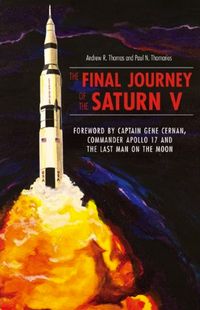Review: The Final Journey of the Saturn Vby Jeff Foust
|
| Restoring KSC’s Saturn V meant handling technical and other challenges—the “other” included dealing with the local wildlife, like a gator named George. |
Those transfers, the ones coming up later this year of Endeavour and Atlantis, are part of a complex—and occasionally controversial—process of “transition and retirement” for the shuttle orbiters that began long before the program’s final flights. Those efforts are in marked contrast to what NASA did at the end of the Apollo program, when it found itself with several leftover Saturn V rockets. The rockets were unceremoniously put on display at KSC as well as the Johnson Space Center in Houston and the Marshall Space Flight Center in Huntsville. All three were displayed outdoors, so that over time the elements took their toll.
The Final Journey of the Saturn V tells the story of the restoration of the Saturn V at KSC, the first of the three giant rockets to be restored and moved into climate-controlled structures to better protect and display them. NASA and the company that ran the KSC Visitors Complex sought to move its Saturn V indoors in the early 1990s, breaking ground on Apollo/Saturn V Center in 1995. While the building was constructed, an Ohio company, Thomarios Painting, won the job of restoring the rocket.
The latter third of this slender volume goes into detail about the restoration effort. Paul Thomarios, the president of Thomarios Painting, moved down to Florida and brought with him many of his company’s employees, who worked around-the-clock shifts to get the rocket restored by a May 1996 deadline. That work featured technical and other challenges—the “other” included dealing with the local wildlife, like a gator named George. At one point, the book notes, work on the restoration stopped when workers noticed a mysterious purple liquid oozing out of part of the rocket. Was it some hazardous chemical left over from the rocket’s manufacture? No: it was from berries stored in the rocket by birds nesting there.
Much of The Final Journey of the Saturn V is not about the restoration itself: author Andrew Thomas devotes much of the book to background about the Apollo program and development of the Saturn V, details that many readers may be familiar with. (Thomarios, the book’s co-author, describes his background as the son of Greek immigrants who took over his father’s painting company in Akron, Ohio, in sidebars scattered throughout the book.) However, the description of the rocket’s restoration, illustrated with a large number of color photos, is fascinating. It’s clear that NASA learned from that challenge of restoring the Saturn V in the careful planning involved in the current transfer of the shuttles to their final homes, protected from the elements.
